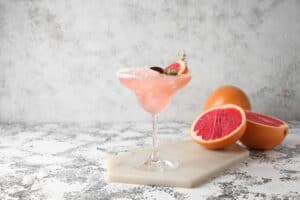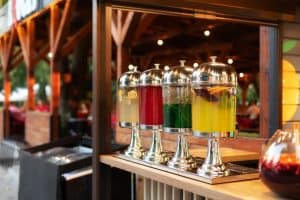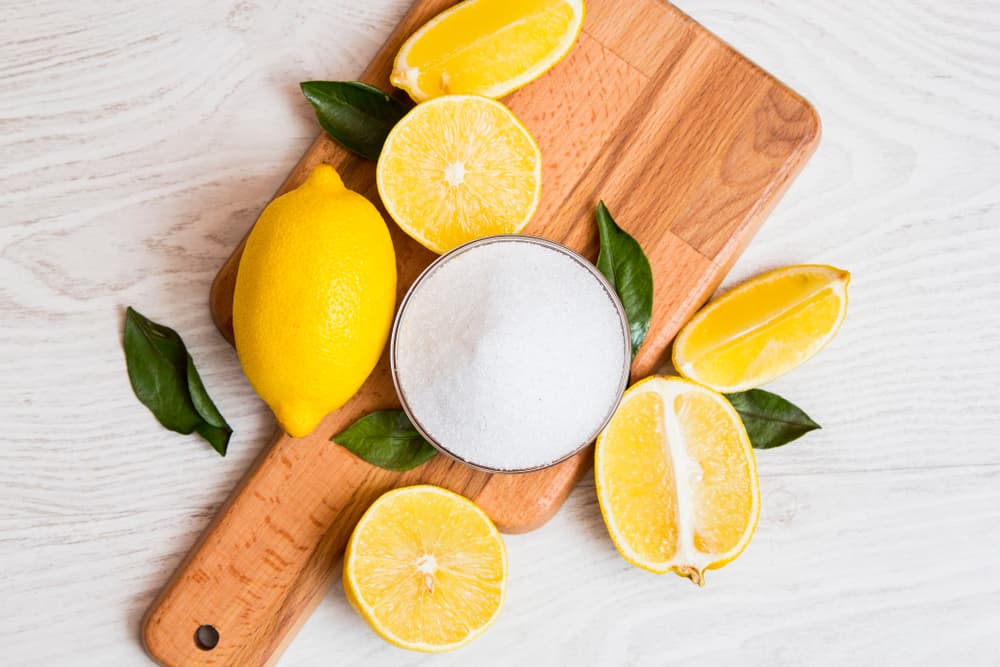
Balancing the acid in drinks, especially cocktails, is vital. If the acidity is too low, your drink will taste too sweet, and too much acid will make it undrinkable.
Citrus fruits such as lemon and lime are usually the go-to acid agent. However, some bartenders are experimenting with alternative acid-adjusting techniques, which include citric acid.
Adding citric (and sometimes malic acid) can increase acidity to the level of lemon or lime. So how much citric acid should you use in your drinks?
We should use citric acid sparingly because of its concentrated acid profile. The recommendation is a quarter citric acid powder to one and a half ounces of water to make a citric acid solution.
In recent years, many bars and bartenders switched to using citric acid as the acidifying and balancing ingredient in their cocktails. Sustainability is one of the main reasons for this switch, but experimentation also plays a role.
We’ll look at the basic chemistry and production of citric acid powder and learn about the required ratios of citric acid to bring out the best in your drinks.
Some Basic Chemistry
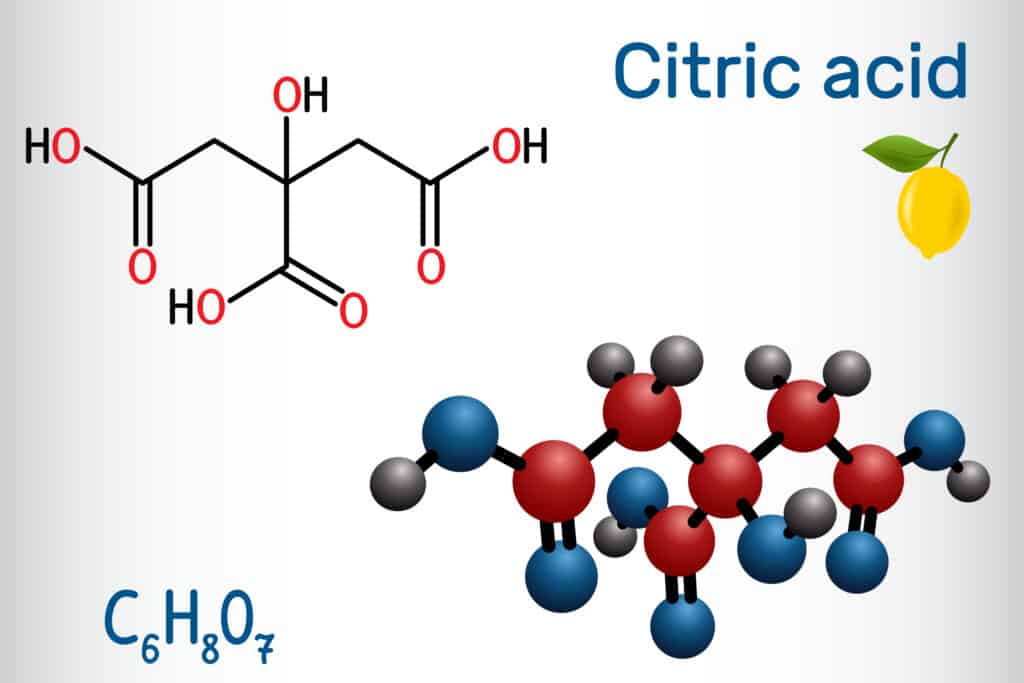
Citric acid is a colorless organic substance commonly found in citrus fruits. The chemical formula is HOC(CO2H)(CH2CO2H)2 or simplified to C6H8O7.
It was first isolated in 1784 by the Swedish-German chemist Carl Wilhelm Scheele when he dried lemon juice, and it left behind crystals. Around the 1890s, large-scale production of citric acid began in Italy.
The juice was treated with hydrated lime (calcium hydroxide) to precipitate and isolate calcium citrate and converted back to citric acid by using diluted sulphuric acid.
Because of its tart and sour taste, in the food industry, we use it as a preserving and flavoring agent, especially in soft drinks and candies.
The Purpose of Citric Acid in Drinks

Traditionally the acid in cocktails comes from lemon or lime juice, which balances the sweetness. Sustainability concerns are one of the significant driving forces for opting for citric acid instead of using fruits.
Squeezing lemons and limes for fresh juice leaves a lot of waste behind, and obtaining them fresh usually comes with a high carbon footprint, especially outside the growing season due to imports.
Alternatives such as citric acid allow a bartender or mixologist more versatility and individual expression. You can read more about alternative acids here.
How Much Citric Acid To Use in Drinks
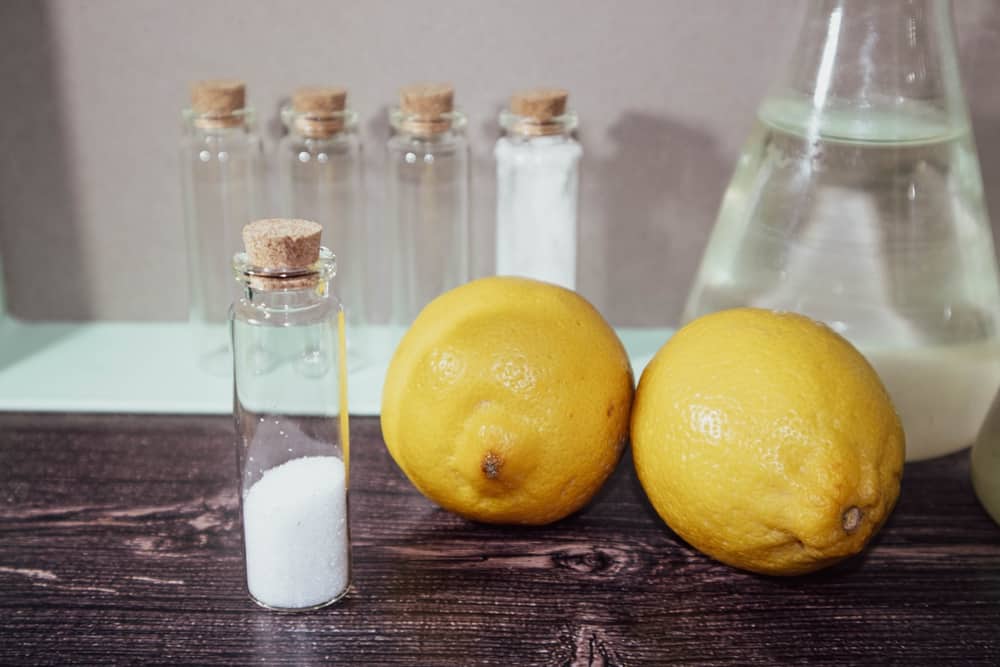
There are two ways of introducing citric acid to drinks and cocktails. One is to replace, e.g., lemon juice in a drink altogether, and the other is to make “replacement juices”, e.g., when replacing lime with grapefruit juice in a classic margarita.
Replacing Citrus Juice With Citric Acid
The first step to replacing citrus juice with citric acid is determining which citrus juice you want to imitate. We will discuss replacing lemon juice in cocktails, for which we need to follow the basic citric acid recipe.
¼ teaspoon of citric acid (powder) dissolved into 1½ ounces of water (1.2 grams of powder in 44 milliliters of water).
Here is a handy chart for various substances to experiment with in your mixology endeavors.
Let’s see how to use the basic citric acid in the classic Lemon Drop cocktail.
Original ingredients:
- 2 oz. vodka
- 1 oz. lemon juice
- 1 oz. of simple syrup
- ½ oz. triple sec
However, with our newfound acid replacement (citric acid solution), we change the recipe’s ingredients to read:
- 2 oz. vodka
- 1 oz. citric acid solution
- 1 oz. simple syrup
Keep in mind that the acid-adjusted recipe leaves out the ½ ounce triple sec/orange juice.
Making Replacement Juices
You can also turn all citrus juices more acidic by adding the citric acid powder to a fixed amount of fruit juice. There is also malic acid, which is another organic acid that gives fruits their sour taste and contributes to the sour taste in unripe apples.
For example, when you want to make your favorite margaritas but have run out of lime, you can substitute lime juice with grapefruit or any other citrus juice. Let’s see how to do that.
The amounts below are based on one liter (1.75 pints) of juice and grams/ounces of citric acid powder. We will look at the lemon mimicking options and the lime options. You can read more about this topic here.
Mimicking Lemon Acidity
- Grapefruit: add 40 grams (1.4 oz) of citric acid
- Orange: add 52 grams (1.8 oz) of citric acid
- Pineapple: add 52 grams (1.8 oz) of citric acid
Mimicking Lime Acidity
- Grapefruit: 27 grams (0.95 oz) citric acid and 13 grams (0.46 oz) malic acid
- Orange: 32 grams (1.13 oz) citric acid and 20 grams (0.46 oz) malic acid
- Pineapple: 32 grams (1.13 oz) and 20 grams (0.46 oz) malic acid.
A Note on Conversions
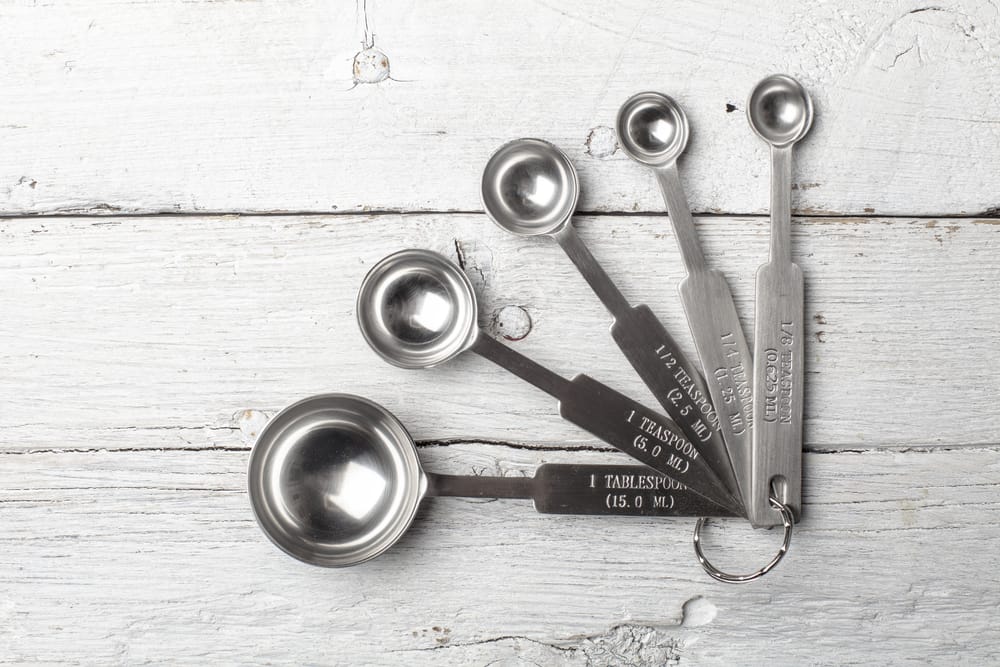
There are three teaspoons (tsp) in one tablespoon (tbsp).
The metric teaspoon is 5ml, while its US/Imperial counterpart is 4.93ml–regardless of this, three teaspoons equal a tablespoon in both Imperial and metric measurements. Thus, an Imperial teaspoon = 4.93ml, and an Imperial tablespoon is 14.79ml.
Medicine and nutritional measurements are always in the metric teaspoon of 5ml. We would recommend using a trusted online scientific converter when calculating conversions.
Use the same set of spoons or measuring equipment when measuring dry or wet goods.
A simple solution would be to have two sets of the same brand–use one set for dry ingredients and another for wet ingredients to avoid washing up and drying between measurements.
Conclusion
Suppose you are using vast amounts of lemons and limes. In that case, citric acid is a wonderful alternative to balance the acidity in drinks (it also prevents apple juice from becoming cloudy because of its preservative qualities.
Be bold and experiment, and If you have somehow botched your cocktail with too much sweetness or acidity, be sure to check these tips to make “corrections”.





